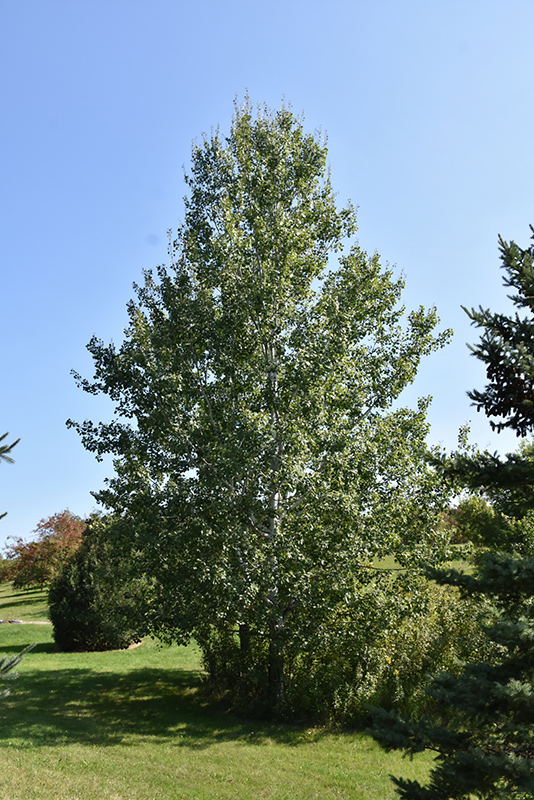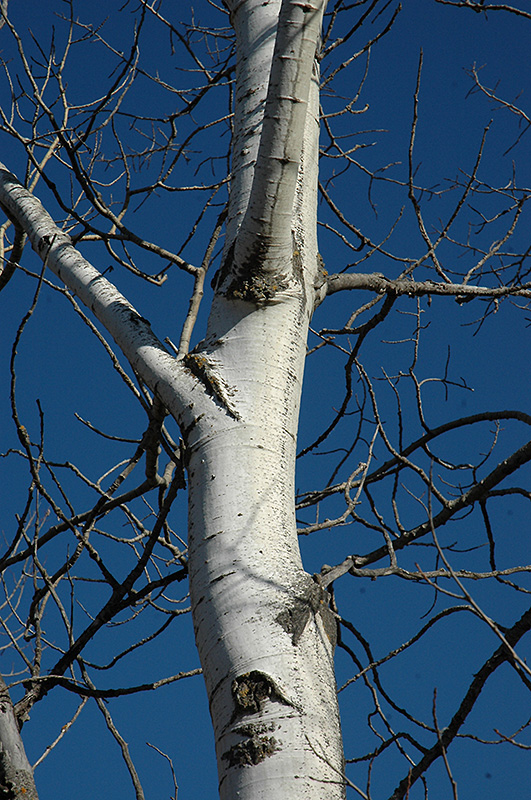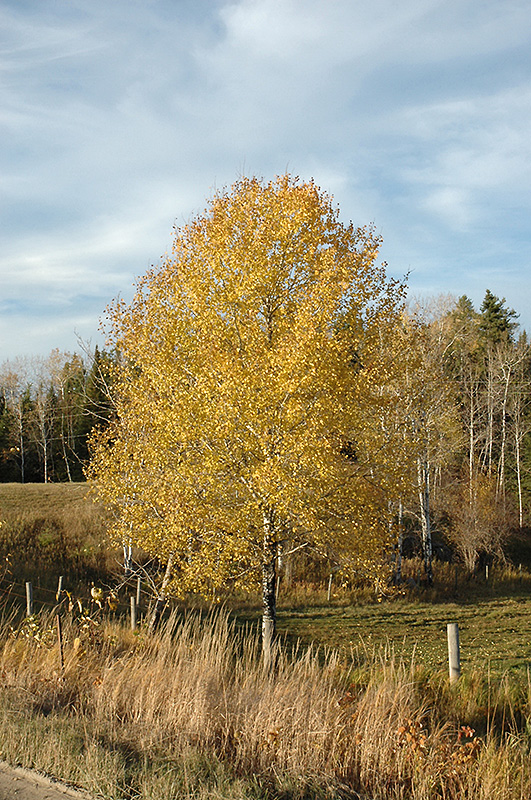Height: 50 feet
Spread: 30 feet
Sunlight:
![]()
Hardiness Zone: 1
Other Names: Quaking Aspen
Description:
A delicate native of the North American forest, with showy white bark and leaves that flutter in the faintest breeze; suckers vigorously, doesn't tolerate polluted conditions well, best left in a natural forest setting or a suburban woodland composition
Ornamental Features
Trembling Aspen has rich green deciduous foliage on a tree with an oval habit of growth. The round leaves turn an outstanding gold in the fall. However, the fruit can be messy in the landscape and may require occasional clean-up. The smooth white bark adds an interesting dimension to the landscape.
Landscape Attributes
Trembling Aspen is a deciduous tree with a shapely oval form. Its average texture blends into the landscape, but can be balanced by one or two finer or coarser trees or shrubs for an effective composition.
This is a high maintenance tree that will require regular care and upkeep, and is best pruned in late winter once the threat of extreme cold has passed. Gardeners should be aware of the following characteristic(s) that may warrant special consideration;
- Suckering
- Insects
- Disease
Trembling Aspen is recommended for the following landscape applications;
- Shade
- Naturalizing And Woodland Gardens
Planting & Growing
Trembling Aspen will grow to be about 50 feet tall at maturity, with a spread of 30 feet. It has a low canopy with a typical clearance of 5 feet from the ground, and should not be planted underneath power lines. It grows at a fast rate, and under ideal conditions can be expected to live for 50 years or more.
This tree should only be grown in full sunlight. It is an amazingly adaptable plant, tolerating both dry conditions and even some standing water. It is considered to be drought-tolerant, and thus makes an ideal choice for xeriscaping or the moisture-conserving landscape. It is not particular as to soil type or pH. It is quite intolerant of urban pollution, therefore inner city or urban streetside plantings are best avoided. This species is native to parts of North America.



